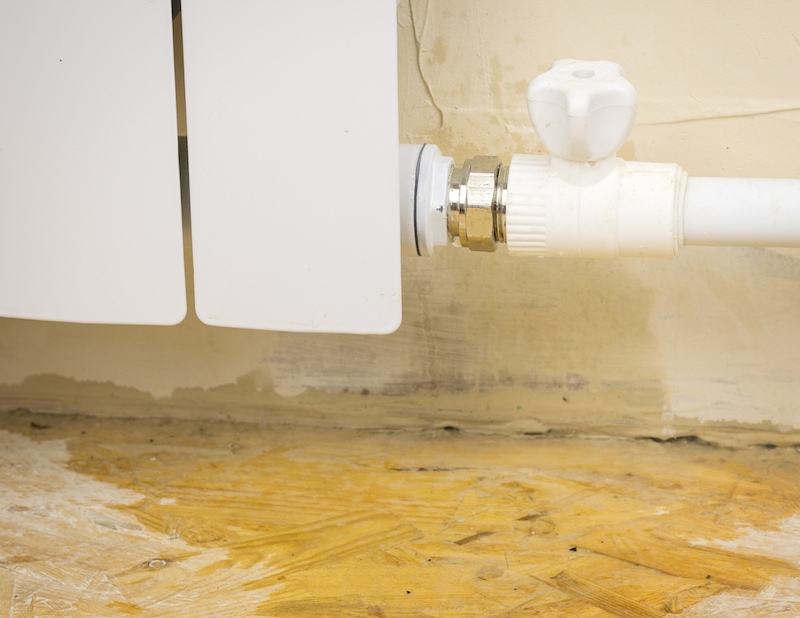Your Home's Most Common Triggers of Leakage: Detailed Examination
Your Home's Most Common Triggers of Leakage: Detailed Examination
Blog Article
What are your opinions on Common Water Leaks In House?

Leakages not just cause waste of water yet can likewise trigger unneeded damages to your house and promote undesirable organic development. Unfortunately, water leaks could go unnoticed since the majority of the pipework in our house is hidden. By comprehending as well as looking for day-to-day circumstances that cause leakages, you can secure your residence from future leakages and unneeded damage. Today, we will consider 6 leak triggers that may be causing your pipelines to drip.
Trespassing roots
Many water leaks start outside the residence instead than inside it. You could see damp patches or sinkholes in your backyard, and also that might mean that tree roots are getting into water lines causing water to permeate out.
Rusty water systems
As time passes by, your plumbing system ages and deterioration such as rust may begin eating away the pipes. This may be the root cause of discoloration or bending on your water pipes. This asks for an examination with your plumber quickly. If our plumbing system is old, think about replacing the pipes since they are at a greater risk of rust than the newer designs.
Faulty Pipeline Joints
Pipe joints can deteriorate over time, resulting in water leakages. If you have noisy pipes that make ticking or banging sounds, especially when the hot water is transformed on, your pipeline joints are possibly under a lot of pressure.
Instant temperature modifications.
Severe temperature level adjustments in our pipelines can cause them to broaden as well as get all of a sudden. This growth as well as contraction might trigger fractures in the pipelines, especially if the temperature level are listed below cold.
Poor Water Connectors
At times, a leak can be created by loosened pipes as well as pipelines that provide your appliances. In situation of a water connections leak, you may notice water running straight from the supply line or pools around your home appliances.
Clogged Drains
Blocked drains pipes might be frustrating and inconveniencing, yet they can often end up creating an overflow causing rupture pipelines. Keep eliminating any kind of materials that may drop your drains that might obstruct them to avoid such aggravations.
All the above are root causes of leaks yet not all water leaks arise from plumbing leakages; some leaks might originate from roofing system leakages. All leakages must be fixed quickly to prevent water damage.
Leakages not just cause waste of water yet can likewise create unneeded damage to your house as well as advertise unwanted organic development. By looking and recognizing for everyday circumstances that cause leaks, you can protect your home from future leakages as well as unneeded damages. Today, we will look at 6 leak creates that might be triggering your pipes to leak.
At times, a leakage can be created by loosened tubes as well as pipes that supply your appliances. In instance of a water connections leakage, you might see water running directly from the supply line or pools around your devices.
How To Check For Water Leak In Your Home
How To Check for Leaks
The average household's leaks can account for nearly 10,000 gallons of water wasted every year and ten percent of homes have leaks that waste 90 gallons or more per day. Common types of leaks found in the home are worn toilet flappers, dripping faucets, and other leaking valves. These types of leaks are often easy to fix, requiring only a few tools and hardware that can pay for themselves in water savings. Fixing easily corrected household water leaks can save homeowners about 10 percent on their water bills.
To check for leaks in your home, you first need to determine whether you're wasting water and then identify the source of the leak. Here are some tips for finding leaks:
Take a look at your water usage during a colder month, such as January or February. If a family of four exceeds 12,000 gallons per month, there are serious leaks.
Check your water meter before and after a two-hour period when no water is being used. If the meter changes at all, you probably have a leak.
Identify toilet leaks by placing a drop of food coloring in the toilet tank. If any color shows up in the bowl after 10 minutes, you have a leak. (Be sure to flush immediately after the experiment to avoid staining the tank.)
Examine faucet gaskets and pipe fittings for any water on the outside of the pipe to check for surface leaks.
Undetected water leaks can happen without the home or business owner even realizing. If you suspect a water leak, but not able to find the source. It is time to contact a professional water leak detection service, The Leak Doctor.
How To Find a Water Leak In Your Home
https://www.leakdoctor.com/blog/How-To-Check-For-Water-Leak-In-Your-Home_AE197.html

Hopefully you enjoyed our topic about How Fast Water Damage Can Ruin Your Home. Thanks for taking the time to read our article. I beg you take the opportunity to share this page if you appreciated it. Thanks a lot for going through it.
Prices & Booking Report this page